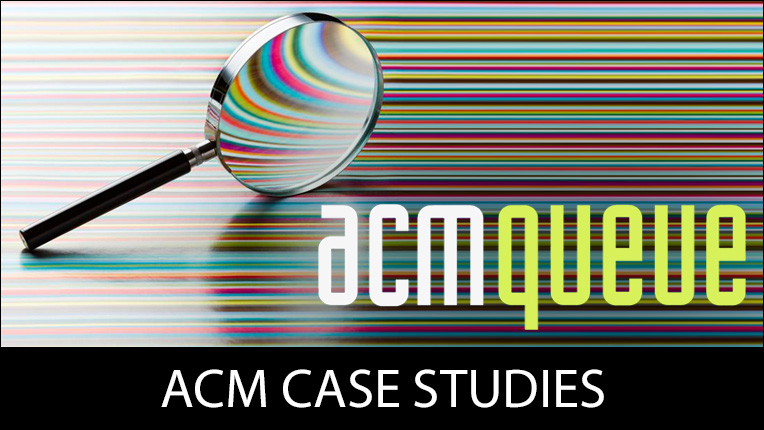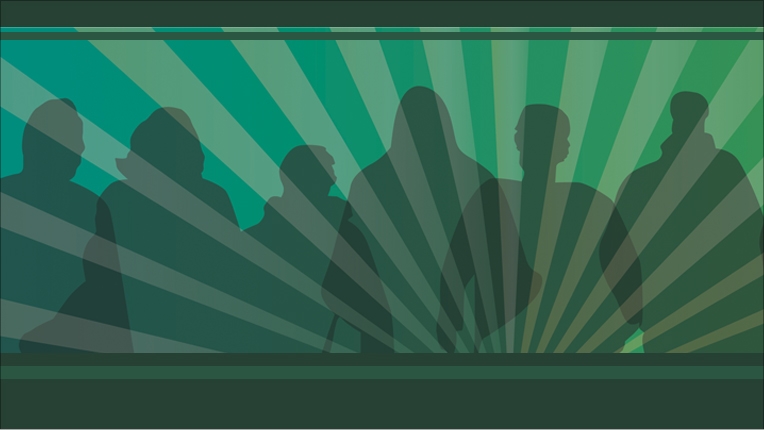Third-Party Material
Instructions for Including Third-Party Material in your Paper
Third Party Material is non-textual in nature - e.g., figures, tables, graphs, photographs, simulations, music or audio/video clips. (Small text quotations borrowed from a third party are placed in quotes and cited.)
It is extremely important that you identify the copyright holder and secure permission to use each and every piece of third party content in your paper or presentation that you, yourself, did not create, be it an image of an M. C. Escher print or a ten-second clip from a movie or a 3D model that you’ve downloaded from the "AIM@SHAPE" website.
You must deliver to ACM documentation of the permission you receive. Please do not assume that, since you found it on the Internet, it is freely available to be used - chances are it’s not.
Flickr and Creative Commons images
If you are using third-party content released for use under Creative Commons (CC) licensing, please be aware that there are various kinds of CC licenses; make sure that the licensing details match your intended use of that content. Of particular note are the "NC" or non-commercial licenses; you may not use material made available with an "NC" Creative Commons license unless you receive specific permission from the author of that content. In all CC licenses, attribution to the creator is required at a minimum, not just the URL where the image is found.
Requesting Permission
When requesting permission, make sure you mention the distribution media ACM will use, e.g., print, online, and recordable media. (See Sample Permission Request Letter) If the copyright holder restricts you from use in one of ACM's intended publication media, you may not include the material. An event's organizers or an ACM representative can help answer specific questions about distribution media or quantities.
Be advised that obtaining permission to reuse third-party content may take some time, and you may be asked to pay a licensing fee to the copyright holder; ACM does not cover this for you. Even if the owner of the third-party content does not require permission to use their content - material from the Stanford University 3D Scanning Repository, for example - you must still identify it as third-party content on ACM's copyright form, and acknowledge its use, as defined by the owner, in your paper.
Fair Use Guidance
ACM offers Fair Use Guidelines at http://www.acm.org/publications/guidance-for-authors-on-fair-use.
Attribution Requirements
ACM requires that you place the ownership attribution of third-party material with the object. If it is a figure or image or model, or similar, you must identify the owner in the caption (example: "Image courtesy David Jones" or "© David Jones"). If the third-party material is some object like a music clip that cannot incorporate an attribution of ownership, then you must identify the owner in your text. (ACM requires this identification so that anyone seeking re-use rights will know whom to contact and so that ACM will not mistakenly grant any re-use rights to third-party material.)
Additionally, the copyright holder may require that a particular acknowledgement be included. If not otherwise stipulated by the copyright holder, this statement of acknowledgement for film or music clips may be placed in the 'Acknowledgements' section of your content.
Completing the Copyright Form
The Third-Party Material table in Part III of the ACM Copyright/Release Form is used as follows if you have any third-party material in your paper:
- "ACM citation reference" is the place in your paper where each piece of third-party content resides: "Figure 1" for example.
- "Original Third-party source" is where the third-party content was first published.
- "Approved By" is the name of the person granting you permission to use this content.
- "Date Received" is the date on which you received permission to use this content.
In addition to completing Part III, you must submit documentation of the permission you’ve received to use each piece of third-party content when you submit your completed copyright form, regardless of the origin of the third-party material.
If the third-party content was originally published by ACM and is under ACM's copyright, you will need to select the "Request Permission" link from the ACM Digital Library page for that content and follow the instructions there to secure permission, using "Re-use in an ACM Publication" as the type of usage. The administrative fee will be waived, but a permission fee will still be charged, with the application of an event-specific discount code that can be obtained from your Program Chair or the ACM Publications Department ([email protected]). The automated permissions system will automatically generate a license documenting your free re-use of this material in a new ACM publication which you should upload with your copyright form.
If the third-party content was originally published by IEEE, please visit the following link to learn how to request permission from IEEE to reuse this third-party content:
https://www.ieee.org/publications/rights/reqperm.html
If the third-party content was originally published by Eurographics, please send an e-mail to [email protected] to request permission to reuse.
Please remember: you must provide us with documentation of the copyright owner’s permission that you have received to use each piece of third-party material when you deliver your paper's copyright form, and you must identify the owner of each piece of third-party material in your paper/presentation itself. For any photograph, figure, graphic image of any kind, the owner must be identified in the caption. ACM cannot grant permission for re-use of material on which it does not hold copyright and therefore must be able to identify that owner. If you cannot obtain permission to use a particular piece of third-party material, it must be removed before final submission.
Flickr and Creative Commons images
Requesting Permission
Fair Use Guidance
Attribution Requirements
Completing the Copyright Form
ACM Case Studies
Written by leading domain experts for software engineers, ACM Case Studies provide an in-depth look at how software teams overcome specific challenges by implementing new technologies, adopting new practices, or a combination of both. Often through first-hand accounts, these pieces explore what the challenges were, the tools and techniques that were used to combat them, and the solution that was achieved.

Publish with ACM
ACM's prestigious conferences and journals seek top-quality papers in all areas of computing and IT. It is now easier than ever to find the most appropriate venue for your research and publish with ACM.

